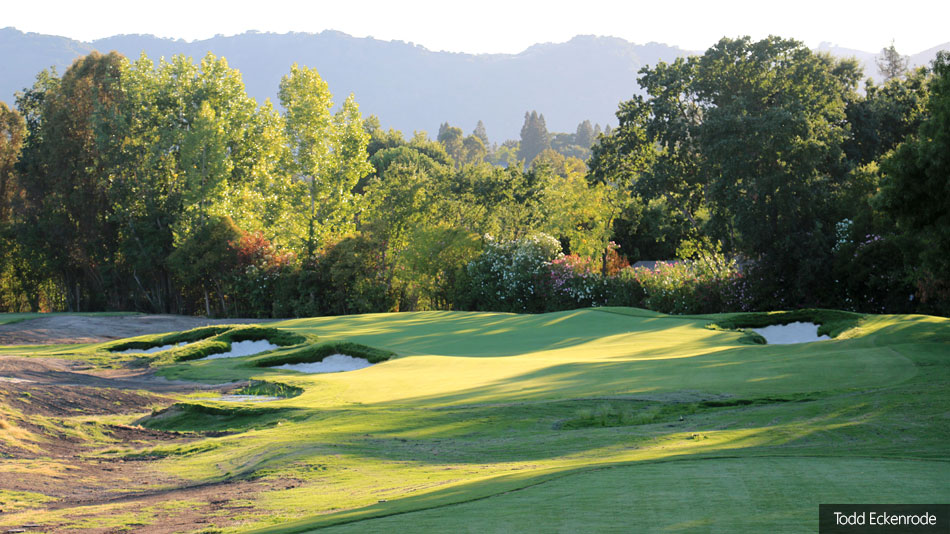The 2020 American Society of Golf Course Architects Environmental Excellence Awards honorees have been named. Projects from six golf facilities have been cited for their work with ASGCA members in addressing unique environmental challenges. The program is presented by Ewing Irrigation & Landscape Supply.
The Environmental Excellence Awards program was introduced in 2019 to recognize the innovative work being done at golf facilities to address the needs of the environment. Golf course architects work with course owners, operators and managers to make a positive impact on the game and the host community.
The submissions were reviewed by a panel of golf industry and environmental leaders, including representatives of Audubon International, GEO Foundation, Golf Course Superintendents Association of America and National Golf Course Owners Association.
The recognized courses are:
• Diablo Country Club, Diablo, California/Todd Eckenrode, ASGCA
• Duxbury Yacht Club, Duxbury, Massachusetts/John Sanford, ASGCA
• Links on the Bayou, Alexandria, Louisiana/Nathan Crace, ASGCA
• Rockland Country Club, Sparkill, New York/A. John Harvey, ASGCA
• Seletar Country Club, Singapore/David Dale, ASGCA, and Kevin Ramsey, ASGCA
• Shenandoah Country Club, West Bloomfield, Michigan/Chris Wilczynski, ASGCA
“This is a stellar group of projects being recognized this year,” ASGCA President Jan Bel Jan said. “I extend hearty congratulations to each of these facilities’ operators and the golf course architects for their commitment to improving the environmental landscape while also assisting the facilities in becoming more sustainable and profitable. Additionally, my thanks to Ewing Irrigation & Landscape Supply for their continued support.”
• Diablo Country Club, Diablo, California – Todd Eckenrode, ASGCA
Club challenges included just a single source for water, few habitat areas, runoff drainage and water quality issues and non-native trees overtaking the course. A state-of-the-art irrigation system was added, creating water efficiency, and maintained turf was reduced by nearly 30 acres. Large areas of native habitat were created, primarily as native grasslands, but also in riparian corridors and in native tree species, supporting a healthy ecosystem. Mass efforts in non-native tree removal helped eradicate the proliferation of non-sustainable trees that had been planted over many decades.
• Duxbury Yacht Club, Duxbury, Massachusetts – John Sanford, ASGCA
Maintaining turf on Duxbury Yacht Club’s 120 acres golf course presented environmental and economic challenges. The golf course’s environmental diversity extends from the bay’s ecologically sensitive marshlands to the tree-lined upland fairways. A well-executed Master Plan resulted in reduced water consumption along with fertilizer and pesticide use including conversion of 20 acres of irrigated turf to unirrigated native fescue areas. Maintained turfgrass was reduced by approximately 30 percent. Adding native fescue areas and rebuilding bunkers have dramatically enhanced the environmental and aesthetic appeal of the course.
• Links on the Bayou, Alexandria, Louisiana – Nathan Crace, ASGCA
The 20+-year-old course featured an 8’ tall wooden bulkhead wall around several lakes. Over the years, the wall began to degrade and fail, causing unsafe conditions for golfers and employees, and accelerating erosion and lake contamination. Lake banks were lined with erosion control fabric and limestone rock. A “cut and fill” project along the lake edge softened slopes and extended turf in other areas.
• Rockland Country Club, Sparkill, New York – A. John Harvey, ASGCA
A Master Plan included environmental parameters to bolster the property’s inherent beauty, wildlife habitat, pollinator plant species and native areas. Improvements included:
• Managed Monarch butterfly and pollinator habitat without creating unreasonable pace of play characteristics on the golf course.
• Balanced newly seeded low-input fescue areas with playability, maintenance, course aesthetics and environmental benefits given the site’s native soils, irrigation and fertilization programs.
• Protected trees within work areas that, historically, raptors use as perches to lookout while hunting.
• Seletar Country Club, Singapore – David Dale, ASGCA, and Kevin Ramsey, ASGCA
The club was losing five acres of golf to a public trail, impacting 10 of 18 holes. A complete rebuild with a new state-of-the-art irrigation system, new drainage (closed system) and new grassing of all 18 holes was incorporated. Maintained turf area was reduced by 34 percent. Adding a new lake and deepening and expanding existing lakes doubled water storage capacity to 139 million gallons. Club is now 100 percent water self-sufficient. The project gave the club a more visually striking, strategic and dramatic look that has attracted new members.
Shenandoah Country Club, West Bloomfield, Michigan – Chris Wilczynski, ASGCA
As part of a larger renovation, extensive improvements were made to holes 14 and 15. A cart path was moved and a dozen trees removed to improve turf quality and enhance play. Nearly 20,000 SF of new wetland was created on the holes, contiguous with the existing wetlands. New plantings included 33 native shrub species and 11 tree species within the area of holes 14 and 15. All tree, shrub, wetland and woodland vegetation replacement follow West Bloomfield’s Woodland Restoration standards.

